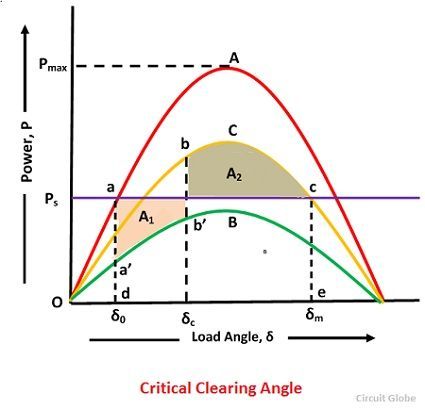The critical clearing angle is defined as the maximum change in the load angle curve before clearing the fault without loss of synchronism. In other words, when the fault occurs in the system the load angle curve begin to increase, and the system becomes unstable. The angle at which the fault becomes clear and the system becomes stable is called critical clearing angle.
When the initial load is given, then there is a critical clearing angle, and if the actual clearing angle exceeds a critical clearing angle, the system becomes unstable otherwise it is stable. Let the curve A represents the power angle curve for a healthy condition; curve B represents the power angle curve for faulty condition and curve C represents the power angle curve after isolation of fault as shown below.
Where γ1 is the ratio of system reactance in healthy condition to that of during the fault and γ2 is the ratio of steady state limit of the system after the isolation of fault and that of system under the initial condition.
For transient stability limit, two areas A1 = A2 or in other words the area under curve adec (rectangle) is equal to the area under the curve da’b’bce.
 Thus if γ1, γ2, and δ0 are known, the critical clearing angle δc can be determined.
Thus if γ1, γ2, and δ0 are known, the critical clearing angle δc can be determined.




